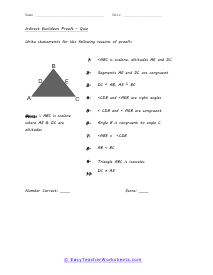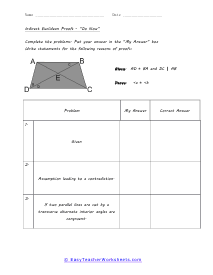What Are Indirect Euclidean Proofs? When you are trying to prove an argument against a problem, then you must work on either making it true or false. In any case, to prove your hypothesis, you need a stream of accurate facts that can be used to devise a conclusion. Considering this phenomenon, a Greek mathematician in the 15th century devised his direct and indirect proofs to attain a conclusion. Let us take a look at what indirect Euclidean proofs are; In an indirect proof, you show that all of the alternatives are false, instead of showing that the conclusion to be proved is true. In order to do that, the negation of the statement has to be proved. Then, deductive reasoning will lead to a contradiction: two statements that cannot both be true. A contradiction shows that the assumption made earlier is impossible, and thus false. Therefore, the statement to be proved must be true, because its negation is false.
Many times when we are trying to prove something we just do not have enough direct evidence to support our claim. In these cases we use indirect proofs. There are two methods of indirect proofs they in include proof by contrapositive and proof by contradiction. Using the contrapositive method we basically turn around the truth value of a standard logical math statement. Proof by contradiction assumes that the opposite proposition is true. You will need a solid geometric vocabulary prior to working on these. These worksheets explain how to write statements and reasons for indirect Euclidean proofs. These worksheets ask your students to provide examples of stated proofs in order to determine if a given statement is correct.








